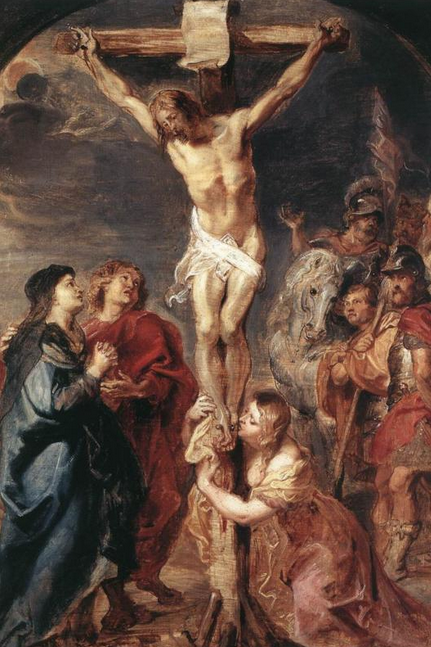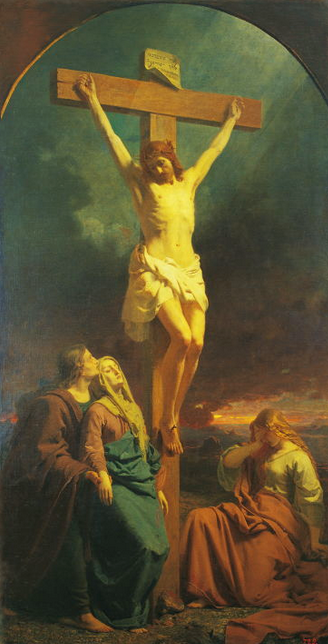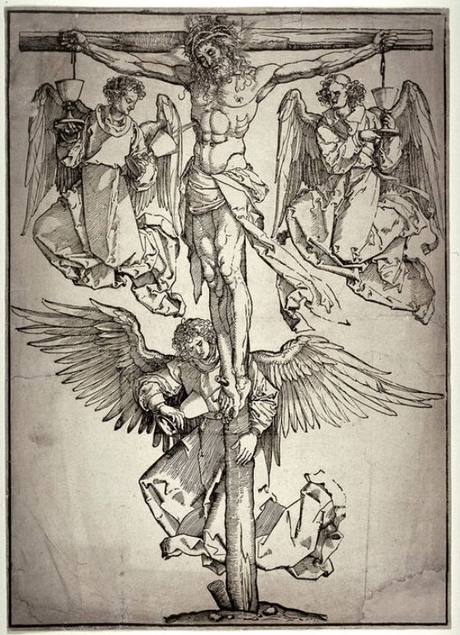They crucified him and divided his clothes by gambling. And they sat down to guard him. Above his head they put in writing the cause of his condemnation: “This is Jesus, the King of the Jews.” With him they crucified two robbers, one on his right and the other on his left. Those who passed by shook their heads and blasphemed against him:
“You, who destroy the temple and in three days rebuild it, save yourself! If you’re the Son of God, come down from the cross!”
In the same way the chief priests laughed at him, together with the teachers of the law and the elders.
“He saved others,” they said, “but he can’t save himself! And he’s the King of Israel! Let him come down now from the cross, and thus we’ll believe in him. He trusts in God; then may God free him now, if he really loves him. Didn’t he say, ‘I am the Son of God?'”
Thus also the robbers who were crucified with him insulted him.
From midday and up to mid-afternoon, all the land remained in darkness. At about three in the afternoon, Jesus called out loudly:
“Eli, Eli, lema sabachthani?” (which means “My God, My God, why have you forsaken me?”).
When they heard it, some of those who were there said, “He is calling Elijah.”
At that moment one of them ran in search of a sponge. He soaked it with vinegar, put it on a cane and offered it to Jesus to drink it. The others said, “Leave him, and we’ll see if Elijah comes to save him.”
Then Jesus again cried out loudly, and he gave up his spirit.
At that moment the curtain of the temple sanctuary tore in two, from top to bottom. The earth trembled and split the rocks. The tombs opened, and many saints who had died resurrected. They left the tombs and, after the resurrection of Jesus, entered the holy city and appeared to many.
When the centurion and those who with him were guarding Jesus saw the earthquake and what had happened, they were terrified and exclaimed:
“Truly this man was the Son of God!”



